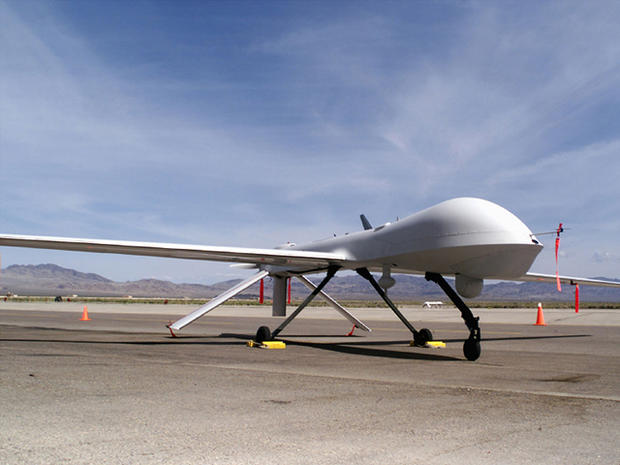U.S. to send drones over damaged nuke plant
(CBS/AP) They've been used in the drug war in Mexico and to help fight the wars in Iraq and Afghanistan. Now, unmanned U.S. spy planes will be used over Japan to take a closer, safer look at the damaged Fukushima nuclear complex.
CBS News' Harry Smith reports that the drones are equipped with infrared cameras, which will allow officials to look inside the complex and find the hot spots where there might be the most trouble.
Conditions at the plant deteriorated Wednesday, with surging radiation forcing Japan to order workers to temporarily withdraw from the plant. In response, the U.S. recommended citizens within 50 miles of it evacuate.
Other countries, including Australia and Germany, have issued more sweeping recommendations for their citizens, advising them to consider leaving Tokyo and other earthquake-affected areas. Tokyo, which is about 170 miles from the stricken nuclear complex, reported slightly elevated radiation levels Tuesday, though Japanese officials said the increase was too small to threaten the 39 million people in and around the capital.
The Pentagon said U.S. troops working on relief missions can get closer than 50 miles to plant with approval. Spokesman Col. David Lapan said the U.S. would review requests from the Japanese for assistance that would require troops to move within that radius, though no approval for such movement had been given since the more strict guidelines were enacted.
Special report: Disaster in Japan
Nuclear meltdowns explained
Japan nuke crisis solution nears first try
The Pentagon said troops are receiving anti-radiation pills before missions to areas where possible radiation exposure is likely.
With the arrival of three more ships to the massive humanitarian mission, there were 17,000 sailors and Marines afloat on 14 vessels in waters off Japan. Several thousand Army and Air Force service members already stationed at U.S. bases in Japan have also been mobilized for the relief efforts.
Airmen have been flying search and rescue missions and operating Global Hawk drones and U-2 reconnaissance planes to help the Japanese assess damage from the disasters. The operation is fraught with challenges, mainly how to continue to provide help amid some low-level releases of radiation from the facility, which officials fear could be facing a meltdown.
Weather also temporarily hampered some relief plans on Wednesday. Pilots couldn't fly helicopters off the deck of aircraft carrier USS Ronald Reagan until late afternoon because of poor visibility. The 7th Fleet said 15 flights with relief supplies were launched from the eight-ship carrier group, about half as many as the 29 flights reported the previous day to deliver food, water, blankets and other supplies.
Several water pumps and hoses were being sent from U.S. bases around Japan to help at Fukushima, where technicians were dousing the overheating nuclear reactors with seawater in a frantic effort to cool them. The U.S. had already sent two fire trucks to the area to be operated by Japanese firefighters, said Cmdr. Leslie Hull-Ryde, a Pentagon spokeswoman.
